STORKS
Yesterday I finally managed to take a trip with the camera. After breakfast, I removed the dust from the photo equipment, charged the batteries with 100% green electricity from the Jänschwalde lignite-fired power plant and packed everything up. My journey took me to Havelland. Actually, I wanted to visit a lost place to check its suitability for the next light painting excursion. Unfortunately, I didn't get very far. The area is surrounded by a high fence including barbed wire, video cameras are installed and I was watched everywhere by "attentive" neighbours. On the grounds, you would be like on display. There are hardly any possibilities to hide. So I abandoned my original plan and went to Linum, a few kilometres away.
Gestern habe ich es endlich geschafft einen Ausflug mit der Kamera zu machen. Nach dem Frühstück entfernte ich den Staub von der Fotoausrüstung, lud die Akkus mit 100% Ökostrom aus dem Braunkohlekraftwerk Jänschwalde und packte alles zusammen. Meine Reise führte mich ins Havelland. Eigentlich wollte ich einen Lost Place auf seine Tauglichkeit für den nächsten Lightpainting Ausflug besuchen. Leider bin ich nicht weit gekommen. Das Gelände ist von einem hohen Zaun samt Stacheldraht umgeben, es sind Videokameras installiert und überall wurde ich von "aufmerksamen" Nachbarn beobachtet. Auf dem Gelände wäre man wie auf dem Präsentierteller. Es gibt kaum Möglichkeiten sich zu verstecken. Also verwarf ich den ursprünglichen Plan und fuhr ins einige Kilometer entfernte Linum.
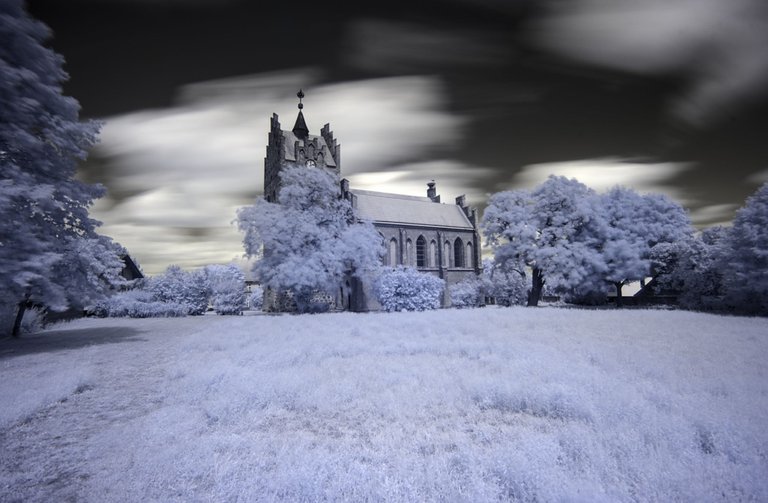
Driving through Linum, I saw a stork's nest on pretty much every house roof. Almost all of them were inhabited. You see storks quite often in Brandenburg, but so many in a small place like Linum is quite unusual. I felt a bit like I was in a Hitchcock film. 😂 I stopped the car at the village church and unpacked the photo equipment. No sooner had I set up the tripod and camera than one of the storks flew towards me from the church roof. It flew past just a metre above the camera. Fortunately, he didn't shit on the camera or my head. Obviously I posed no danger to him. He flew back to his nest. I took the picture above with the Nikon D750, the Nikkor 17-35/2.8 and mounted 720 nm infrared flter. The exposure time was 120 seconds at ISO 50 and f/11.
Bei der Fahrt durch Linum sah ich auf so ziemlich jedem Hausdach ein Storchennest. Fast alle waren bewohnt. In Brandenburg sieht man recht häufig Störche, aber so viele in einem kleinen Ort wie Linum ist schon sehr ungewöhnlich. Ich fühlte mich ein wenig wie in einem Hitchcock Film.😂 Ich stoppte den Personenkraftwagen an der Dorfkirche und packte die Fotoausrüstung aus. Kaum hatte ich das Stativ samt Kamera aufgestellt, flog einer der Störche vom Kirchdach auf mich zu. Nur einen Meter über die Kamera flog er vorbei. Glücklicherweise hat er nicht auf die Kamera oder meinen Kopf geschissen. Offensichtlich stellte ich keine Gefahr für ihn dar. Er flog wieder zurück in sein Nest. Das Bild oben habe ich mit der Nikon D750, dem Nikkor 17-35/2,8 und montiertem 720 nm Infrarotflter aufgenommen. Bei ISO 50 und Blende 11 betrug die Belichtungszeit 120 Sekunden.
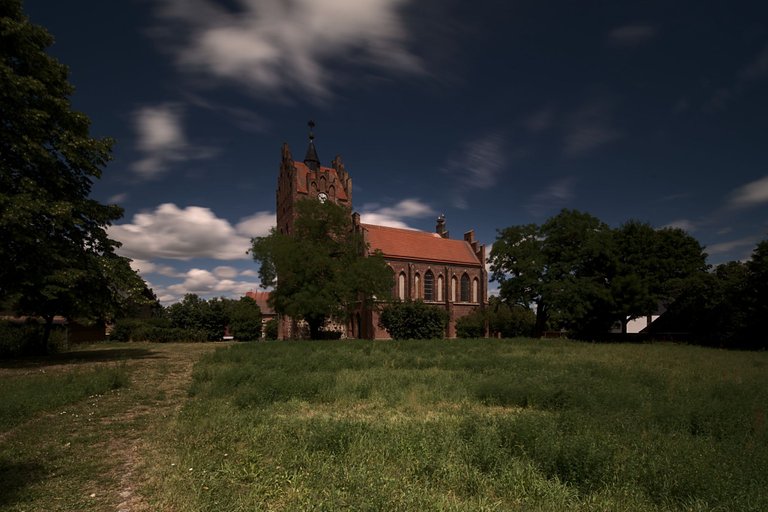
Then I mounted the Laowa 12 mm on the camera and put a polarising filter and an ND 1000 filter in the holder. The exposure time was 20 seconds at ISO 50 and f/11.
Danach montierte ich das Laowa 12 mm an die Kamera und steckte einen Polarisationsfilter und einen ND 1000 Filter in den Halter. Die Belichtungszeit betrug bei ISO 50 und Blende 11 20 Sekunden.
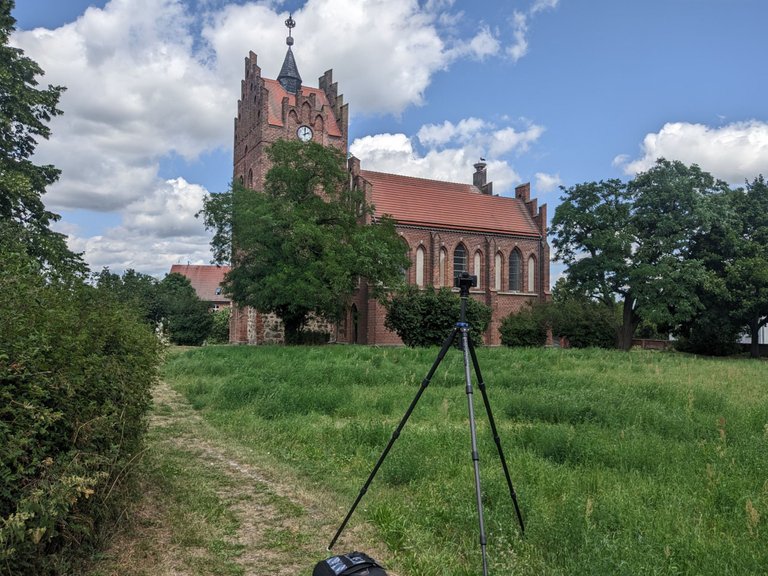
A large tripod is quite advantageous for such photos. Because of the great height, you are not forced to tilt the camera. If the sensor is parallel to the building, there are no converging lines that would otherwise have to be corrected in post processing.
Ein großes Stativ ist recht vorteilhaft für solche Fotos. Wegen der großen Höhe ist man nicht gezwungen die Kamera zu kippen. Wenn der Sensor parallel zum Gebäude ist gibt es keine stürzenden Linien, die man ansonsten im Post Processing korrigieren müsste.
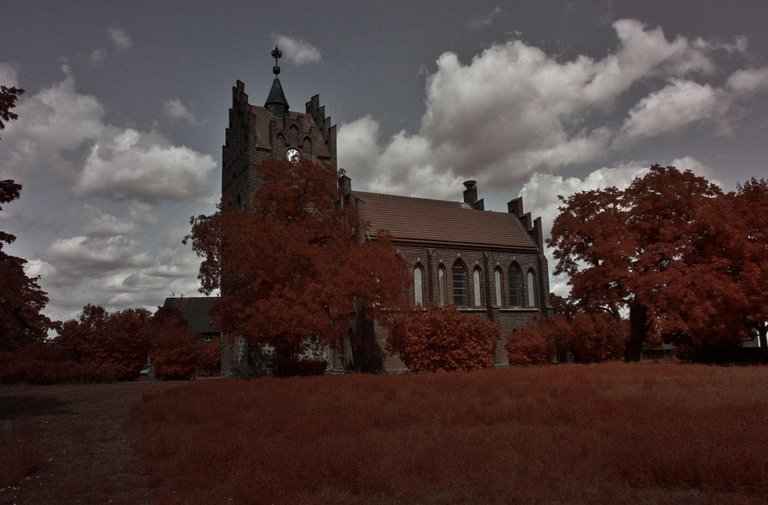
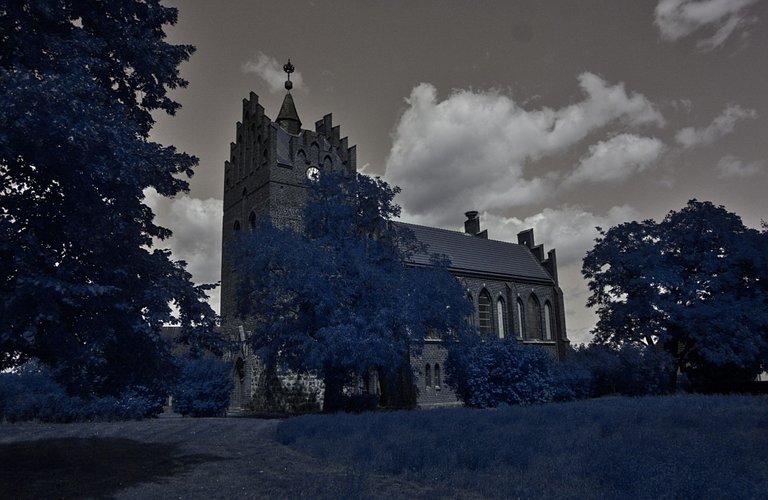
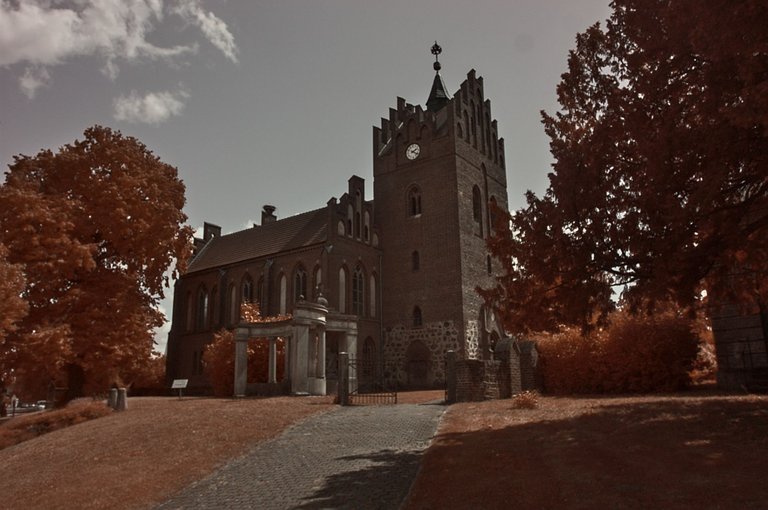
I then took some more shots with the converted Nikon D300 and a BG3 UV/IR pass filter. This filter has a high transmission in the ultraviolet and infrared range and blocks most of the visible light. Since the D300 is converted in an undefined way, I was able to take the shots without a tripod. I had chosen 1/1000 second as the exposure time. For the second image, I changed the input profile in Post Processing to linear BGR. This corresponds to a swap of the red and blue colour channels.
Ich machte dann noch einige Aufnahmen mit der umgebauten Nikon D300 und einem BG3 UV/IR Pass Filter. Dieses Filter hat eine hohe Transmission im ultravioletten und infraroten Bereich und blockiert den größten Teil des sichtbaren Lichts. Da die D300 undefiniert umgebaut ist, konnte ich die Aufnahmen ohne Stativ machen. Ich hatte 1/1000 Sekunde als Belichtungszeit gewählt. Beim zweiten Bild habe ich im Post Processing das Eingabeprofil auf lineares BGR geändert. Das entspricht einem Tausch der Farbkanäle rot und blau.
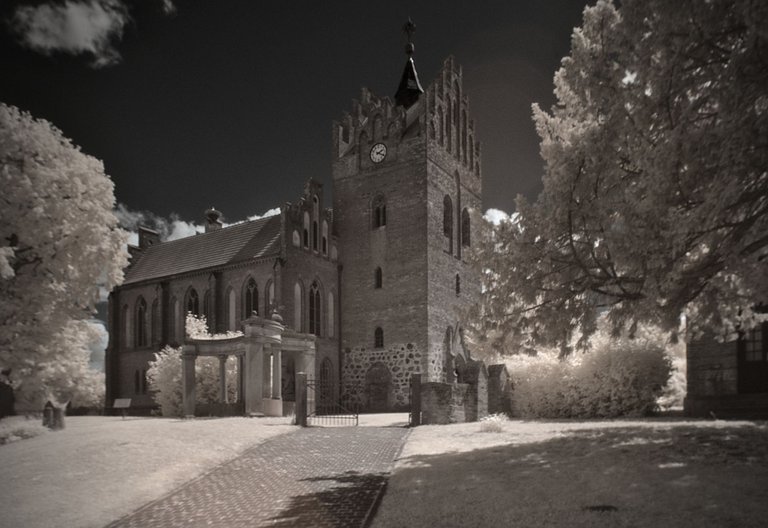
I then swapped the BG3 filter for the 720 nm filter I used for the cover image of this post. I like the result with the unconverted D750 much better. Even with other filters, the D300 does not give good results. I guess I will have to look for another solution and modify or have a better camera modified.
Ich tauschte dann das BG3 Filter gegen das 720 nm Filter, welches ich für das Titelbild dieses Beitrages verwendet habe. Das Ergebnis mit der nicht umgebauten D750 gefällt mir wesentlich besser. Auch mit anderen Filtern liefert die D300 keine guten Ergebnisse. Ich werde wohl nach einer anderen Lösung suchen müssen und eine bessere Kamera modifizieren oder modifizieren lassen.
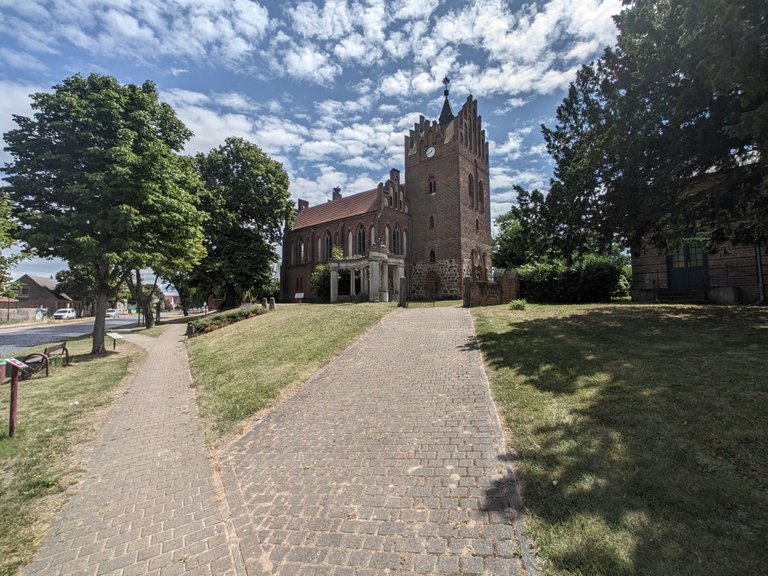
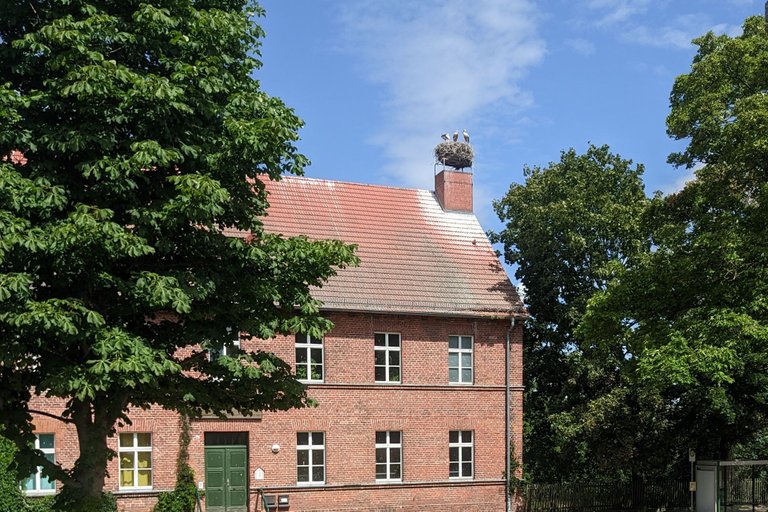
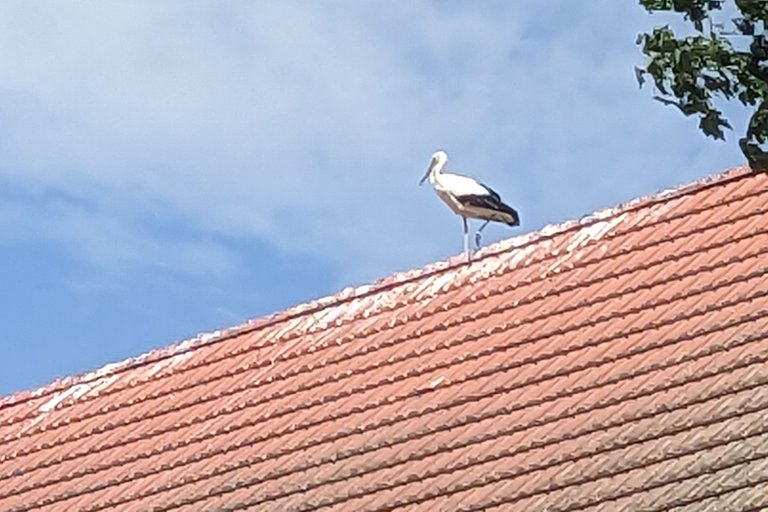
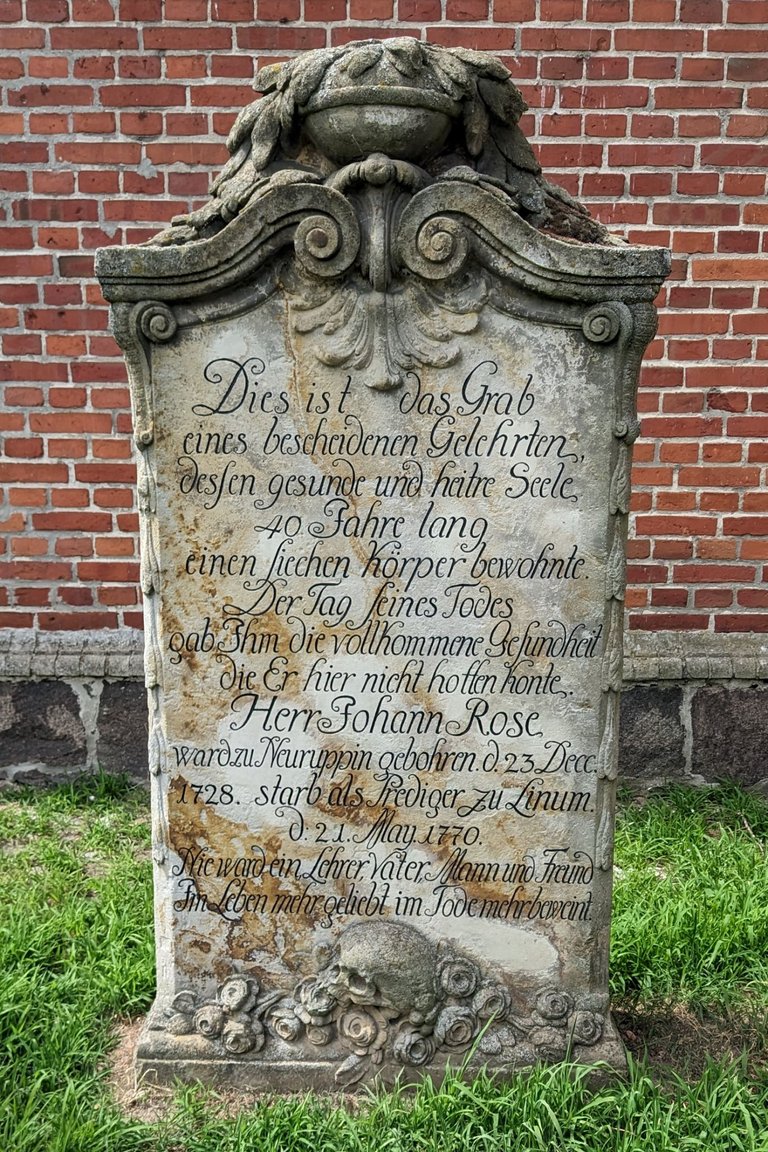
"This is the grave of a humble scholar whose healthy and serene soul inhabited a sickly body for 40 years."
And why do so many storks live there? Most likely because there are many bodies of water, such as the Linumer Teiche, and thus enough food for hundreds of storks.
Und warum wohnen dort so viele Störche? Höchstwahrscheinlich weil es dort viele Gewässer, wie die Linumer Teiche, und somit genug Nahrung für hunderte von Störchen gibt.

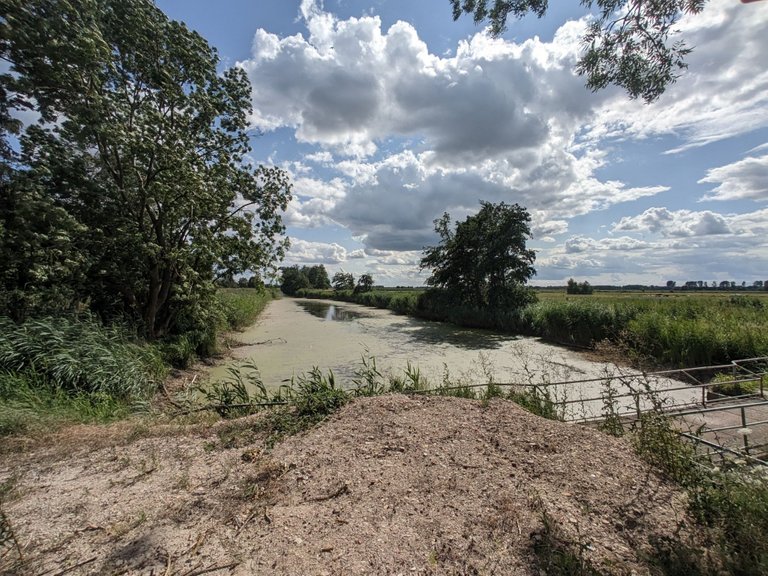
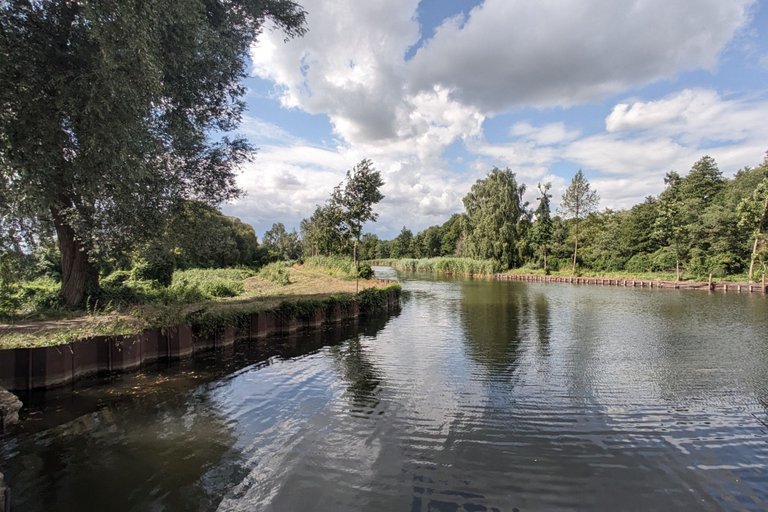

About me
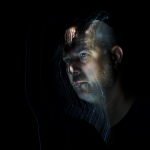
Long exposure and infra. Some new unique pieces, kudos! :)
!PIZZA
!PGM
Thanks 😊
That place is amazing, looks perfect for me and your step by step description is also valuable. Nice work Steven!
Thanks.
$PIZZA slices delivered:
@lightcaptured(8/15) tipped @lichtkunstfoto
Congratulations @lichtkunstfoto! Your post has been a top performer on the Hive blockchain and you have been rewarded with this rare badge
You can view your badges on your board and compare yourself to others in the Ranking
If you no longer want to receive notifications, reply to this comment with the word
STOPCheck out our last posts: